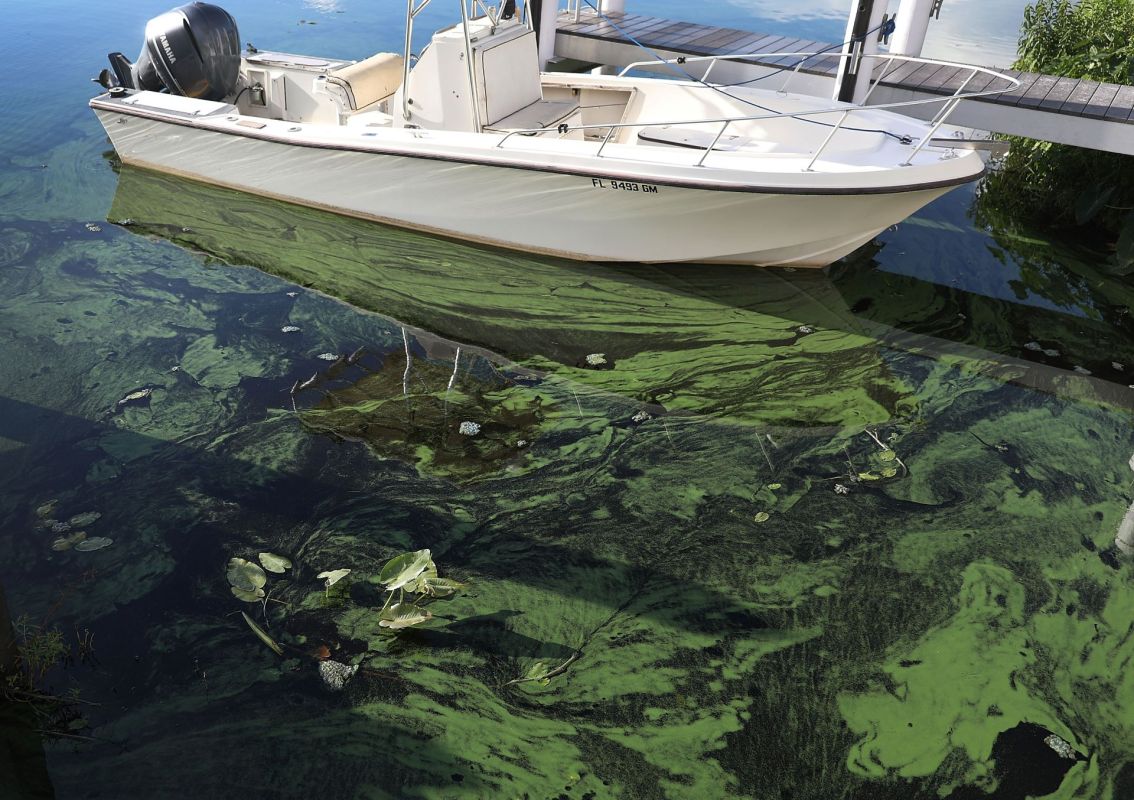Toxic algae is overtaking the largest freshwater lake in Florida, hampering the summer plans of thousands — and the situation is likely to worsen. While plans are underway to alleviate the problem going forward, some are skeptical.
What's happening?
Lake Okeechobee in southern Florida is currently half full of bright green toxic algae, which is expected to increase throughout the summer.
"We're looking at a bullet in the chamber here," Eve Samples, executive director of the conservation group Friends of the Everglades, told The New York Times of the growing bloom.
A handful of conditions allow the dangerous algae to thrive. According to reporting, the severity of the algal bloom is largely due to our overheating planet, which has caused increased storms and rainfall that have stirred up phosphorus that the algae need to grow. The phosphorous has mostly been sourced by fertilizer runoff from rivers upstream that feed into the lake. Rising levels of carbon dioxide pollution, which the algae need, intensify the problem.
While blooms of algae aren't uncommon for Florida in the summer months, blooms of this magnitude are, and they seem to be occurring more often.
In 2018, Lake Okeechobee experienced a similar bloom that leaked into surrounding canals and the Caloosahatchee River. That year, toxin-producing algae exploded in both fresh and saltwater ecosystems, leading to former Governor Rick Scott to declare a state of emergency.
Downstream algae outbreaks from Okeechobee's outflows also significantly impacted coastal communities in 2013, 2016, and 2018, causing beaches to be closed and businesses to shut down. Some residents were evacuated as well.
Why toxic algae is concerning
The Florida Department of Health issued a health alert in June warning the public to exercise caution in and around the area of Lake Okeechobee. Those looking for summer fun in the lake were warned not to swim, wade, ski, or boat where there is a visible bloom. They were also told to keep pets away from the water, and for good reason.
The toxic algae overtaking Lake Okeechobee can cause major health issues for humans and animals, including lung infections, organ damage, and neurological disorders. The algae-contaminated water is so harmful that even boiling it will not eliminate the toxins, according to health officials.
What's being done about the toxic algae
The Army Corps of Engineers is undertaking a massive project to combat the growing issue of toxic algae affecting not only Lake Okeechobee, but the surrounding area as well.
A 10,500-acre reservoir expected to be completed in 10 years or so will capture at least some of Okeechobee's toxic outflows. This is in addition to the recently completed 6,500-acre artificial wetland designed to remove nutrient pollution before water flows out into the Everglades.
Some are skeptical, though, of the project's impact, as the new reservoir will fill to capacity after draining only 6 inches of water from Lake Okeechobee, per The New York Times.
An earlier proposal for a 60,000-acre system was scrapped due to objections from the local agricultural community.
Join our free newsletter for cool news and cool tips that make it easy to help yourself while helping the planet.









